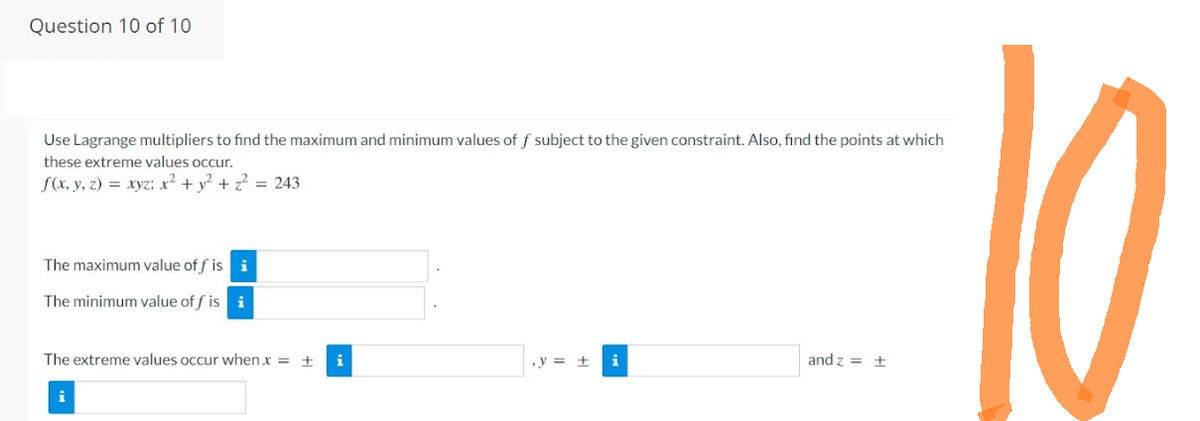Use Lagrange multipliers to find the maximum and minimum values of f subject to the given constraint. Also, find the points at which these extreme values occur. f(x, y, z) = xyz; x² + y² + 2² = 243 The maximum value of f is i The minimum value of f is i The extreme values occur when x = ± MI i .y = ±i and z = ±
Use Lagrange multipliers to find the maximum and minimum values of f subject to the given constraint. Also, find the points at which these extreme values occur. f(x, y, z) = xyz; x² + y² + 2² = 243 The maximum value of f is i The minimum value of f is i The extreme values occur when x = ± MI i .y = ±i and z = ±
Linear Algebra: A Modern Introduction
4th Edition
ISBN:9781285463247
Author:David Poole
Publisher:David Poole
Chapter2: Systems Of Linear Equations
Section2.4: Applications
Problem 17EQ
Related questions
Question
100%

Transcribed Image Text:Question 10 of 10
Use Lagrange multipliers to find the maximum and minimum values of f subject to the given constraint. Also, find the points at which
these extreme values occur.
f(x, y, z) = xyz; x² + y² + ² = 243
The maximum value of fis
The minimum value of f is i
i
The extreme values occur when x =
i
+
i
y = +
and z = ±
Expert Solution
This question has been solved!
Explore an expertly crafted, step-by-step solution for a thorough understanding of key concepts.
Step by step
Solved in 4 steps with 4 images

Recommended textbooks for you

Linear Algebra: A Modern Introduction
Algebra
ISBN:
9781285463247
Author:
David Poole
Publisher:
Cengage Learning

Algebra & Trigonometry with Analytic Geometry
Algebra
ISBN:
9781133382119
Author:
Swokowski
Publisher:
Cengage

Linear Algebra: A Modern Introduction
Algebra
ISBN:
9781285463247
Author:
David Poole
Publisher:
Cengage Learning

Algebra & Trigonometry with Analytic Geometry
Algebra
ISBN:
9781133382119
Author:
Swokowski
Publisher:
Cengage